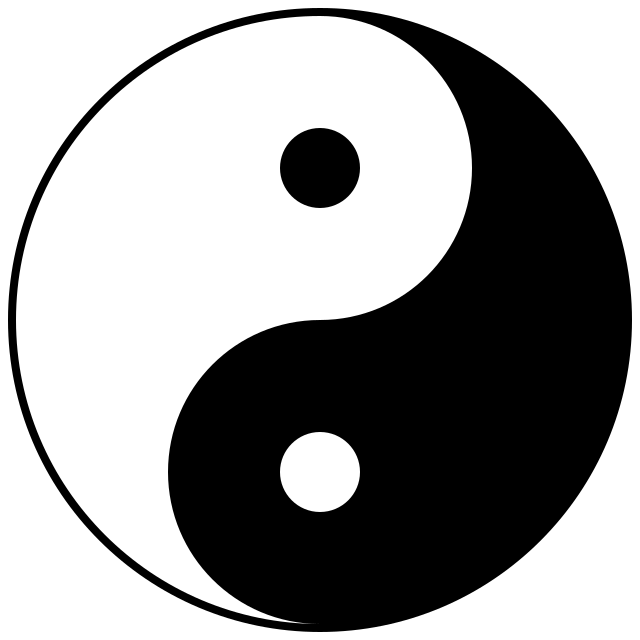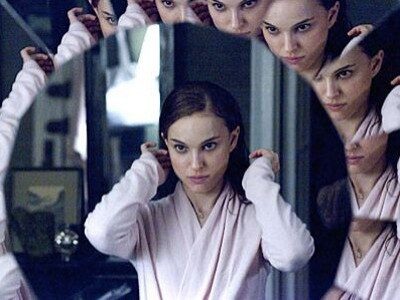Synopsis:
Nina is a ballet dancer. After being part of the company for a long period of time, she finally receives the role of the Swan Queen in her company’s production of Swan Lake.
She is pretty, naïve and technically precise: Nina is perfect for the role of the White Swan. Nevertheless, she lacks the traits of the Swan Queen’s other half completely, she is not suitable at all for the role of the erotic and sexually attractive Black Swan. As a consequence, she is afraid she can’t succeed in the role. She feels a lot of pressure around her: her mother, the company’s director, Thomas (who is Nina’s biggest supporter and critic) and also Lily, a newcomer from San Francisco. Nina spends much of the film worried about this, and continually fails at Thomas’ main goal for her…
The theme of the double.
The Black Swan vs the White Swan (Black and white). Nina’s evil side and her good, innocent and pure attitude. Nina and Lily, Nina against Lily. Reality and illusion

| Beautiful Fearful Fragile The ideal casting for the White Swan Perfectly right movements | I never see you lose yourself Perfection is not only about control it’s also about letting it go |
Who/What is the Black Swan? Who is Nina? Whom (or what) is she becoming or whom/what do other people want her to be? The Black Swan might be a malevolent entity residing within Nina, much like a demon. Or it might be a disturbed split personality, the result of mental illness. The film leaves it open to interpretation.
Literary connections:
Italian Literature: L. Pirandello – Il fu Mattia Pascal
English Literature: R. L. Stevenson – The strange case of Doctor Jeckyll and Mr. Hyde.
THE MIRROR

“Nina sometimes sees her anti-Nina in the mirror. Ballet has been obsessed with mirrors for centuries. Dancers often spend more of their time in front of the mirror than before an audience, and it’s in the mirror that they see both the ideal versions of themselves they hope to show the public as well as their own failings”.
Quotation from the New York Times:
https://www.nytimes.com/2011/02/10/arts/dance/10swan.html
Literary connection:
The Picture of Dorian Gray – the theme of the double and the portrait as the alter-ego of the protagonist to represent his innermost obsessions and his corrupted soul.
Dorian is a young innocent boy when he arrives in London but after meeting Lord Henry Wotton his life changes completely: he starts living his life in a dissipate way following the principles of new hedonism (a theory of ethics in which pleasure is seen as the chief good).
From Lord Wotton’s words: “Time is jealous of you […] Ah! Realize your youth while you have it. Live! Live the wonderful life that is in you! Let nothing be lost upon you. Be always searching for new sensations. Be afraid of nothing… a new Hedonism… that is what our century wants. You night be its visible symbol.”
Dorian expresses a wish after he sees the beautiful portrait that his friend and painter Basil has made of him: “How sad it is! I shall grow old and horrible, and dreadful. But this picture will remain always young. It will never be older than this particular day of June… If it were only the other way! If it were I who was to be always young, and the picture that was to grow old! For that —for that— I would give everything! Yes, there is nothing in the whole world I would not give! I would give my soul for that!”
Dorian’s wish comes true — his portrait begins to show the signs of Dorian’s ageing and pleasure-seeking experiences while Dorian remains young, beautiful and pure. Dorian lives a life of dissipation, debauchery and crime. He kills the portrait painter, Basil Hallward, and is responsible for the suicides of two other characters whose lives he ruins. At the end of the story, he stands face to face with his portrait which is the mirror of his soul, thinking about Basil’s murder. He can’t stand the sight of the portrait anymore because it reminds him of his past, it is a burden he can no longer bear.
“He would destroy it. […] It had been like the conscience to him. Yes, it had been conscience. He would destroy it.” Dorian stubs the portrait with the same knife he used to kill Basil.
“When they entered, they found, hanging upon the wall, a splendid portrait of their master as they had last seen him, in all the wonder of his exquisite youth and beauty. Lying on the floor was a dead man, in evening dress, with a knife in his heart. He was withered, wrinkled, and loathsome of visage. It was not till they had examined the rings that they recognised who it was.”


This film teaches us that perfection can ruin our lives. We can often lose ourselves without realizing by obsessing over even the smaller things, which can create a sort of competition with our own selves. In the film, Nina is in a competition with Lily, but trying to be better than her makes her turn against herself. At the end of the film, infact, she thinks that she has killed Lily but she actually hurt the good part of herself.
This film shows how other people can also have a big influence on how we act and have an impact on our lives both negatively and positively. For example, in this film it’s Thomas and Lily who have the biggest influence on Nina, they change the way she sees herself and the life she is supposed to live. This life was also just a reflection of her mother’s own ambitions, so, in a sense, Nina never took her own decisions and her life was always someone else’s.
Thinking about what we saw in the movie “Black Swan”, we reflected on the meaning of the presence of the mirror in certain scenes.
We came to the conclusion that Nina, through the mirror, can see her alter-ego, the Black Swan; that part of herself she is trying to hide.
This other Nina seems to be evil and tries to take her part in the show.
For all her life she has been asked to show the best part of herself while Thomas and Lily ask her to demonstrate the other part that she has always repressed, asking her to lose herself.
This thing takes her to live a very difficult period of her life.
The Black Swan is a complex and beautiful film about the struggle of exploring the deepest parts of ourselves.
The aspect we liked the most about the film is Nina’s obsession of being perfect and her constant need to work to exhaustion, for example the day before the show when even the pianist told her to go home and rest.